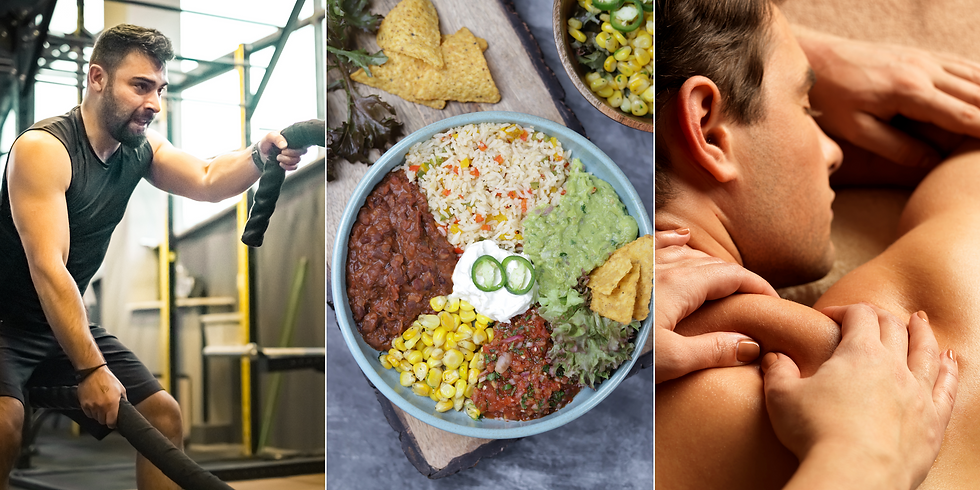How Your Dosha Shapes Your Strength Training: An Ayurvedic Guide to Muscle Building
- Ayurvedagram Bali

- Sep 8
- 2 min read
When it comes to muscle building, most people think in terms of sets, reps, and protein shakes. But Ayurveda, the ancient science of life, invites us to look deeper. According to this holistic system, our bodies are governed by three doshas—Vata (air & space), Pitta (fire & water), and Kapha (earth & water). Each constitution has its own strengths, challenges, and needs when it comes to training and recovery.

Vata Dosha: The Agile Builder
Vata types are naturally lean, with quick energy bursts and a love for variety. Their challenge lies in consistency—they can burn out or lose weight easily if they overtrain.
Training Tips for Vata:
Focus on grounding, strength-based routines with moderate weights and steady repetition.
Avoid overexertion or high-intensity training that leads to fatigue.
Incorporate restorative practices like yoga and stretching to keep joints healthy.
Ayurvedic Support for Vata:
Favor warm, nourishing meals rich in healthy fats and protein.
Herbs like Ashwagandha and Shatavari support muscle repair and energy.
Daily Abhyanga (oil massage) with sesame oil helps soothe muscles and reduce stiffness.

Pitta Dosha: The Fiery Performer
Pitta types are naturally strong, disciplined, and driven. They excel in building muscle and often see quick results. Their challenge, however, is overheating—both physically and mentally—leading to burnout, inflammation, or irritability.
Training Tips for Pitta:
Opt for moderate weights with controlled intensity—avoid pushing to extremes.
Choose cooler environments or exercise early morning/late evening.
Balance strength training with cooling activities like swimming or restorative yoga.
Ayurvedic Support for Pitta:
Favor cooling foods like cucumber, coconut water, and leafy greens.
Herbs such as Guduchi and Brahmi help reduce inflammation and calm the mind.
Coconut oil massage helps soothe heat and improve recovery.

Kapha Dosha: The Steady Strength
Kapha types are naturally strong, with great stamina and endurance. They build muscle easily but may struggle with sluggishness, water retention, or difficulty losing fat.
Training Tips for Kapha:
High-intensity interval training and circuit workouts help keep energy moving.
Add variety to avoid falling into a comfort zone of slow, repetitive exercise.
Cardio alongside strength training is key to balance.
Ayurvedic Support for Kapha:
Favor light, spicy foods to stimulate metabolism—think ginger, turmeric, and black pepper.
Herbs like Triphala and Guggulu support weight balance and metabolism.
Dry massage (Udwarthana) with herbal powders helps reduce sluggishness and tone tissues.
The Ayurvedic Edge in Muscle Building
Ayurveda reminds us that muscle building is never about how much weight you lift—it’s about balance, recovery, and aligning with your constitution. By working with your dosha instead of against it, you’ll not only build strength but also create long-term resilience and vitality.
At Ayurvedagram Bali, we guide you through personalized programs that combine strength-building practices with Ayurvedic therapies, nutrition, and recovery rituals. Imagine sculpting your body while also harmonizing your energy—muscle building that doesn’t just look good but feels deeply nourishing.
Ready to train smarter, not just harder? Book a consultation with our Ayurvedic experts at Ayurvedagram Bali and discover how to align your fitness journey with your unique dosha.




Comments